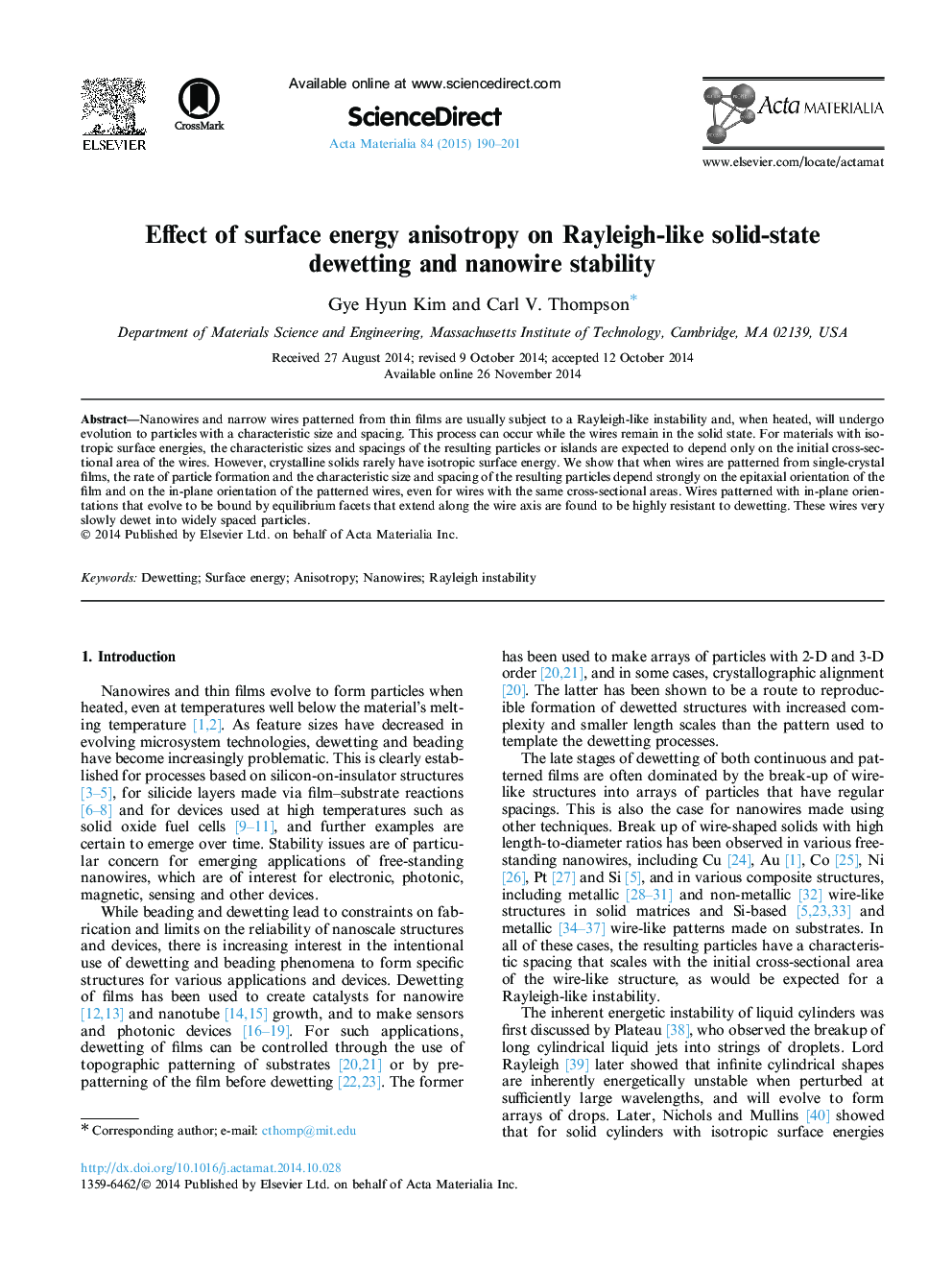| Article ID | Journal | Published Year | Pages | File Type |
|---|---|---|---|---|
| 1445427 | Acta Materialia | 2015 | 12 Pages |
Nanowires and narrow wires patterned from thin films are usually subject to a Rayleigh-like instability and, when heated, will undergo evolution to particles with a characteristic size and spacing. This process can occur while the wires remain in the solid state. For materials with isotropic surface energies, the characteristic sizes and spacings of the resulting particles or islands are expected to depend only on the initial cross-sectional area of the wires. However, crystalline solids rarely have isotropic surface energy. We show that when wires are patterned from single-crystal films, the rate of particle formation and the characteristic size and spacing of the resulting particles depend strongly on the epitaxial orientation of the film and on the in-plane orientation of the patterned wires, even for wires with the same cross-sectional areas. Wires patterned with in-plane orientations that evolve to be bound by equilibrium facets that extend along the wire axis are found to be highly resistant to dewetting. These wires very slowly dewet into widely spaced particles.
